The Feast of Our Lady Of Mt. Carmel
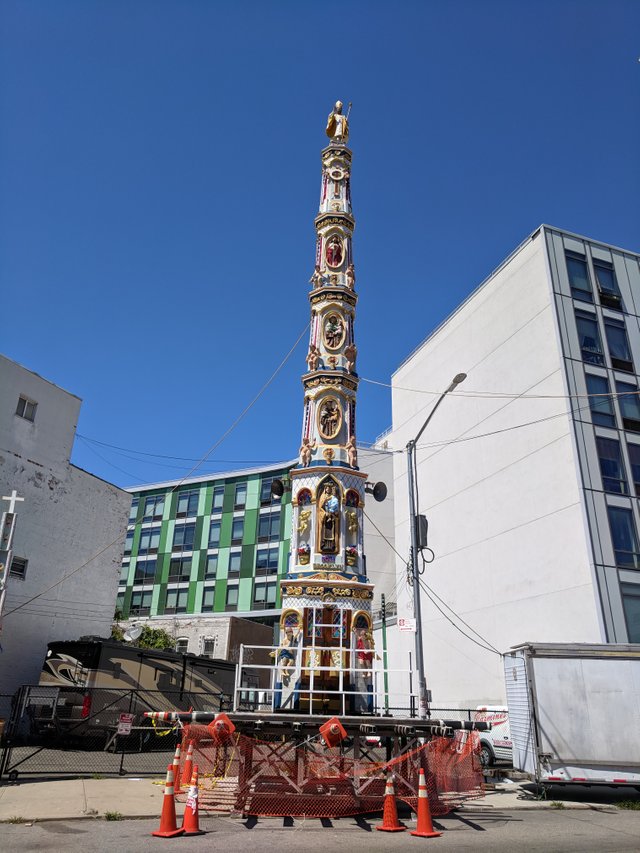
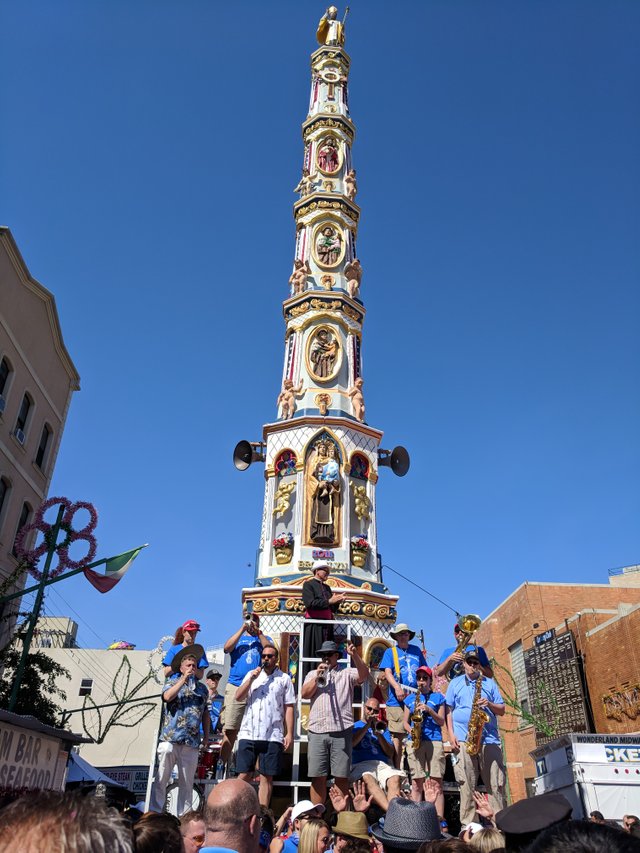
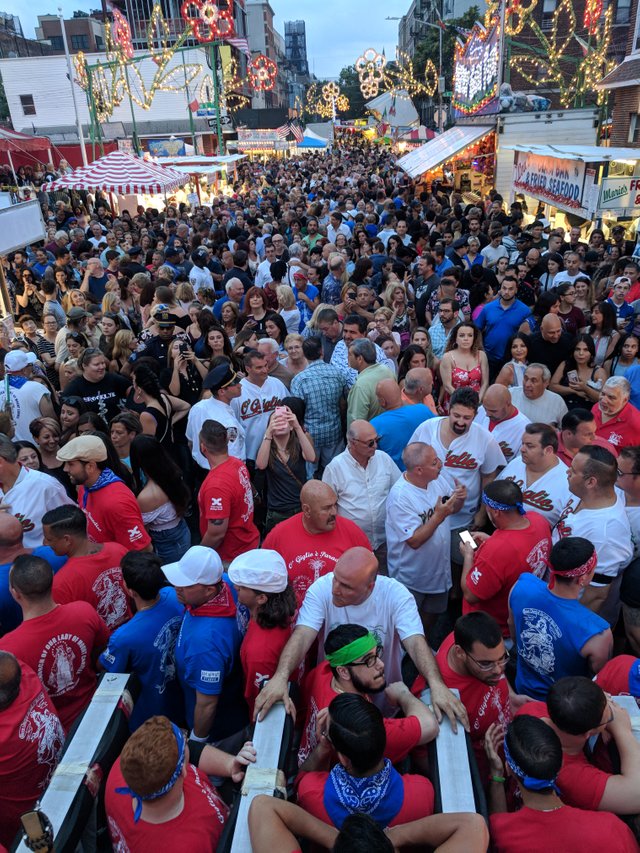
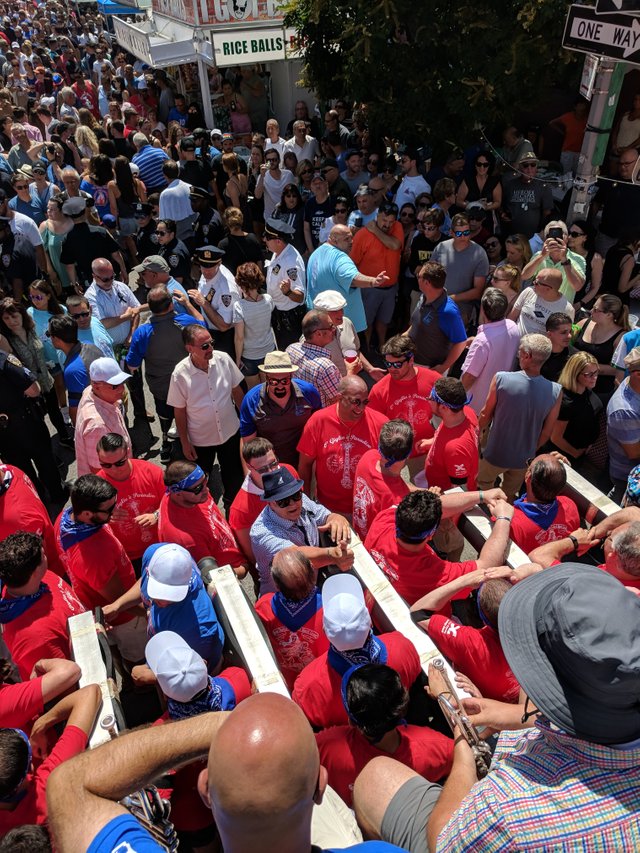
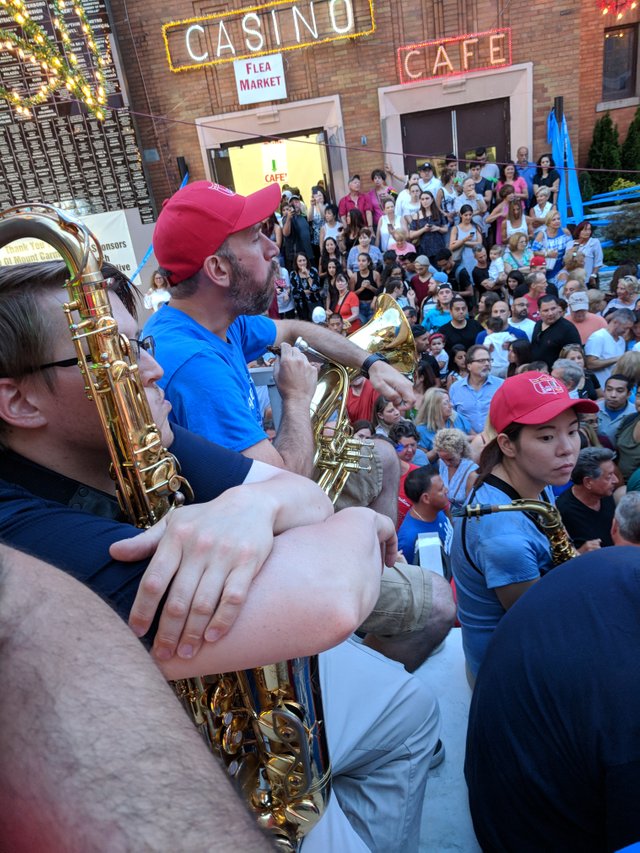
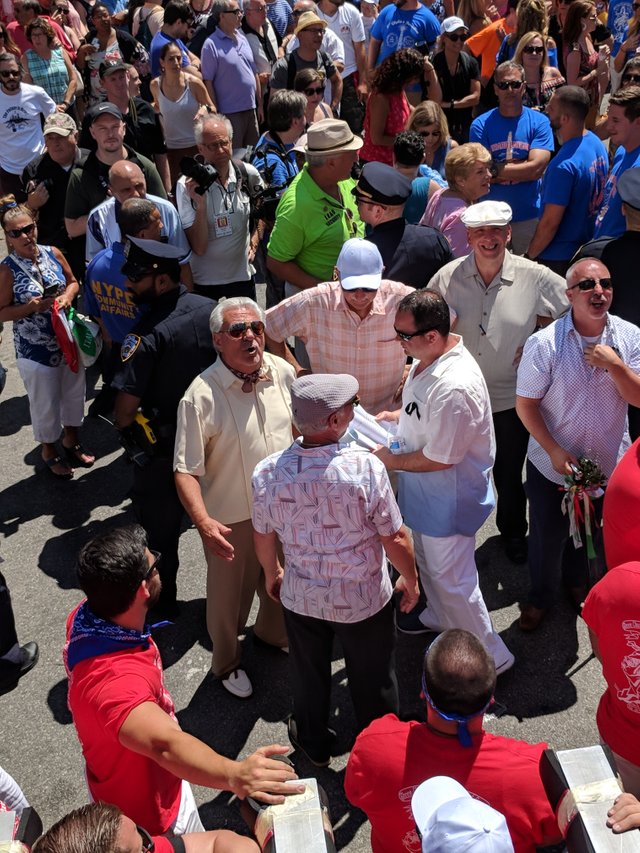 Through the years, each generation has been steadfastly loyal to the traditions embodied by the Giglio Feast. Grandparents, parents and relatives have passed down the importance of la festa. In Italy, they are most important aspect of religion for the men. To a slightly lesser degree, this holds true for immigrant and second-generation, Italian-American males.
Through the years, each generation has been steadfastly loyal to the traditions embodied by the Giglio Feast. Grandparents, parents and relatives have passed down the importance of la festa. In Italy, they are most important aspect of religion for the men. To a slightly lesser degree, this holds true for immigrant and second-generation, Italian-American males.
Today, the feast usually opens the week after the 4th of July, and runs for 12 days including the feast day of Our Lady of Mount Carmel on July 16th. During this period, there will be a continuous celebration of religious activities in the church (daily masses, novenas and processions) and secular activities in the streets (social events, food concessions, and, games and chance). In addition to its socio-religious aspects, the feast generates needed revenue for the Shrine Church of Our Lady Mount Carmel.
The focal point of feast activities is Giglio Sunday and its follow-up, the Night Lift of the Giglio, and Old Timers' Day. Usually, Giglio Sunday is scheduled for the first Sunday after Independence Day, with the feast opening a few days prior. The Italian Williamsburg community holds three holidays dear—Christmas, Easter and the Giglio Feast. The celebration, fanfare, homage and devotion are all part and parcel of the love they have for San Paolino. Every year, the young and old of this neighborhood anticipate the Giglio Feast. For those involved in feast activities, the feast dates take precedence over all other responsibilities.
The pageantry and religiosity of the Giglio Feast is the result of much planning according to ceremonial dictates. Indeed, this feast has been a mainstay and has flourished for so long because of the planning behind it. By the first of each year, the feast executive committee starts to meet with church officials to map out an agenda and format. General meetings (first on a semi-weekly, then weekly basis) are scheduled, which continue right up to the feast, with attendance increasing as the date draws closer. The central purpose of these meetings is to plan and implement all facets of the feast.
These paranza (lifter) meetings reinforce the statuses of important members of the feast hierarchy. The emphasis is on camaraderie, friendship, and cooperation between various cliques working toward a successful feast. Subcommittees are created and new appointments (capos, apprentice capos, lieutenants, committee chairmen) are made, based upon their work for the church and the feast. Each meeting opens and closes with an invocation: "Our Lady of Mt. Carmel, pray for us; San Paolino, pray for us." Msgr. Calise, the pastor, gives a homily or offers a feast-related story; the men restate family ties and friendship lines under the guise of banter, jokes, arguments, and long-winded speeches. By the last meeting, when feast tee-shirts, caps, and scarves are distributed, all plans are in place and the men eagerly await the opening of the feast especially, the specific giglio activities.
On the day before Giglio Sunday, there is a Questua procession. Preparation begins at 5:30 A.M. when crews of men drive to a local bakery to pick-up and count the loaves of bread for distribution. By 10 A.M., over one hundred Questua committee members, musicians, police, and children "assistants") have congregated and are enjoying breakfast at the home of a former Capo Number One, Jimmy Smith, across the street from the church. At 11 A.M., the bread is blessed and crowd breaks up into distribution crews. Each crew consists of a chairman, money managers, children who bag the bread, a band, and the police who maneuver this sizable assemblage through the Brooklyn traffic.
There are prearranged stops en route where certain feast devotees have refreshments for the crews. The band plays the Giglio Song and a few other requests. Often, people make considerable donations to the church, and the crews walk for miles and hours in the hot, sticky July weather until all the bread has been distributed. By 4 P.M. the crews return to the church and disperse. In addition to raising some money for the church, the Questua procession is the traditional signal to the community that the next day is Giglio Sunday.
Giglio Sunday begins with a line of march. The men (chairmen, lifters, priests, lieutenants and band) assemble at the church and begin a march to designated homes to pick up important feast personages. Each stop is, in essence, a ritual within a ritual, with family, friends and well- wishers offering food, setting off firecrackers, and requesting songs of the band. Of course the most heard and requested song of the day is the Giglio Song (O' Giglio'e Paradiso), the reprise is played and sung hundreds of times to the never-tiring throng. When the enlarged group reaches the Capo's residence, the fanfare is always more elaborate, as befits his honored position, in fact, the route is designed so that the last to be picked up is the Capo Paranza, who assumes his rightful place as leader.
In full strength now, the line of march returns to the church in time for the special 11:00 AM Giglio Mass. Participant-observation and interviewing indicates that 50% of the lifters attend this Sunday mass. With the band still playing, the parade enters Our Lady of Mount Carmel Church and is greeted by clapping parishioners and visitors. The men take their places in front of the church, being seated in reverse order of importance. The music ceases and the clapping subsides for the reverent part of the service, the celebration of the mass. Often-religious dignitaries from "Rome, the local bishop's office and neighborhood clergy of other faiths are represented on the altar. Once the mass is over, the Giglio Song is reprised. Lifters and attendees clap wildly, in time to the song as they spill excitedly into the streets.
The men head up Havemeyer Street to the parking lot of legendary Brooklyn Italian-American restaurant Bamontes, where they are served "army style" a coffee- and- danish breakfast. On the street nearby, the men purchase white carnations, some of which they spray red and green to approximate the colors of the Italian flag, and place them in the crevice of their caps. Then they drift back to await the start of the "dancing" (lifting and moving) of the giglio and the boat (la barca).
The giglio tower is a heavy structure weighing about 4 tons and standing 65 feet in height. It was originally built of wood, but since 1966, in Brooklyn, the framework of the giglio has been constructed of metal. The front of the structure is divided into six pieces of papier-mache and Styrofoam carved saints, angels, flowers and designs. On top the giglio is San Paolino di Nola. The tower is anchored on a square platform, large enough to accommodate a band and singer/M.C. The entire weight rests on four sturdy metal legs. Beneath the platform, a line of seven evenly spaced metal poles (I-beams) protrude at a length of four feet on each of four sides. Four men to a pole, on bent knees, position their shoulders and when 112 men simultaneously stand erect, the giglio is off the ground; it is a lift. La barca is constructed in the same fashion and is lifted by the same principle. Riding in the boat is a band and singer, the Turk, and young boys, dressed in Arabian costumes that shower the audience with confetti.
The men stand around the giglio, near their poles, talking among themselves or with loved ones in the crowd, waiting with nervous energy for the first lift. Finally, the moment is at hand as the band and singer climb into position. The pastor blesses the structure and the lifters; he says the invocation to Our Lady of Mount Carmel and San Paolino, with the men responding, "Pray for us." The national anthems of America and Italy are played. By this time, the more impatient lifters are calling out, "Musica!" and the band again plays the Giglio Song. Numbering somewhere between five and ten thousand, the crowd, like the lifters, is now clapping and cheering. The men are situated under their poles. They will hold the structure aloft while the support blocks are taken away (two of its legs are on the curb and the other two are on the street), and then carefully they walk the giglio off of the sidewalk.
Each ensuing lift follows the same format with certain variations. The singer/M.C. announces a lift to the crowd over the P.A. system. The Capo Paranza with his cane of office stands in front of the giglio, making sure everyone is in place, he signals the band to begin. The men listen for the end of the first stanza of the Giglio Song, because most of them do not have a view of the Capo Paranza , who thrusts the cane in the air as a signal for the lifters to straighten their legs and elevate the structure The Capo makes constant gestures with his cane, calling out instructions, which are picked up by lieutenants at the corners of the structure and relayed to the lifters.. A whirling motion of the cane signals the band to stop. At the command, "musica," a second tune begins. The men dance the giglio to the chosen choreography until the Capo signals a halt.
The Capo then shouts four commands in the dialect of the Nolani: "Uaglio! (Boys!); Aizati i spalli"(Lift your shoulders); Acconge i cosce"(Tighten your legs); "Aggiet!" (Throw it!)." On the last command, the men bend their legs allowing the giglio to crash to the pavement. The greater the impact, the more San Paolino above shakes, the more exuberant the cheers from the crowd. The men come out to hug, clasp, and congratulate one another, friends, and relatives.
Joseph Sciorra makes the interesting argument that, "like the giglio itself, the song "O' Giglio 'e Paradiso" has become a key symbol for the community." Sciorra quotes an unidentified neighborhood man's explanation of the song's power to stir emotions: "You get a feeling when you hear the music. When they play the Giglio song, you start bouncing with the music. It goes through you. You can't fight it. It's a feeling that automatically comes to you. It gets in your blood." Sciorra concludes that O' Giglio'e Paradiso , "releases a flood of memories of past feasts; it evokes shared feelings and ideas. Besides becoming an auditory symbol of the event, ultimately it has come to stand for the community itself."
During the feast, another important ritual, geared toward the socialization of the children of the neighborhood, is enacted. A scaled- down version approximately 25 feet tall is employed for the dancing of the children's giglio. The next generation of lifters, with their own leadership of capos and lieutenants, are dressed in caps, kerchiefs and special tee shirts, as they proudly take part in their own pageantry. The children's giglio serves as a preparation for that day when, at the proper height, size, and age, they can become lifters. It is expected that the children of those now involved with the feast will become involved in the future. The dancing of the children's giglio reinforces this expectation each year.
You got a 3.24% upvote from @postpromoter courtesy of @rightwing670!
Want to promote your posts too? Check out the Steem Bot Tracker website for more info. If you would like to support the development of @postpromoter and the bot tracker please vote for @yabapmatt for witness!